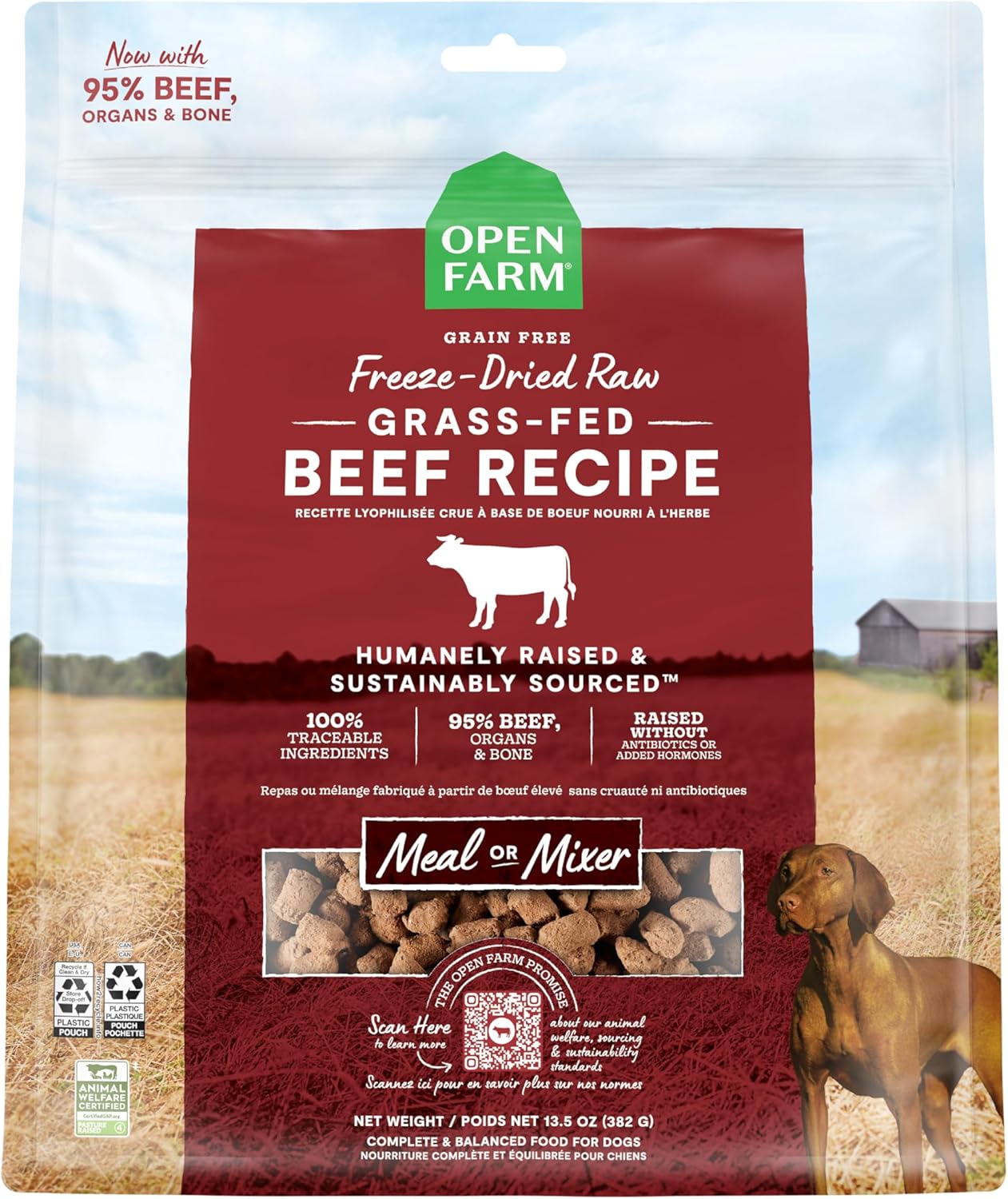




The Ultimate Guide to Feeding Your Dog Grass-Fed Beef: Benefits and Recipes
Feeding your dog a nutritious diet is essential for their overall health and wellbeing. In recent years, grass-fed beef has gained immense popularity among pet owners, and for good reasons. This article explores the benefits of grass-fed beef for dogs, offers helpful recipes, and covers the best ways to incorporate this protein source into your pet’s diet.
Why Choose Grass-Fed Beef for Your Dog?
Many dog owners are now opting for grass-fed beef due to its superior nutritional profile compared to conventionally raised beef. But what are the specific benefits?
1. Nutritional Benefits of Grass-Fed Beef
Grass-fed beef is not only a high-quality protein source but also packed with essential vitamins and minerals. Some of the key benefits include:
- Higher Omega-3 Fatty Acids: Grass-fed beef contains more omega-3 fatty acids, which are vital for promoting a healthy heart, brain, and skin.
- Rich in Antioxidants: It is loaded with antioxidants like Vitamin E, which help combat free radicals and support immune function.
- Lower in Calories and Fat: Grass-fed beef tends to be leaner, making it a suitable option for dogs needing to manage their weight.
2. Humanely Raised Beef Benefits
Animals raised in humane conditions tend to be healthier, resulting in healthier products for pets. Sourcing beef from family-owned farms that prioritize animal welfare ensures that your dog receives meat free from harmful chemicals, antibiotics, and hormones.
How to Incorporate Grass-Fed Beef into Your Dog’s Diet
Now that you’re aware of the benefits, how can you effectively integrate grass-fed beef into your dog’s meals?
1. Raw Feeding
Many pet owners are turning to raw feeding as a means of providing their dogs with fresh, unprocessed nutrition. Freeze-dried raw beef can be an excellent choice; it’s easy to serve and retains much of its nutrient content.
2. Mixing with Kibble
For those using kibble, grass-fed beef nuggets can serve as an excellent topper. Simply mix these nutrient-rich nuggets into your dog’s dry food for an added meaty taste that enhances their meal.
3. Hydration Factor
You can easily rehydrate freeze-dried beef with a little water, creating soft, moist bites. This method is particularly beneficial for older dogs that may have dental issues, making it easier for them to chew.
The Importance of Full Coverage Nutrition
Ensuring your dog gets full coverage nutrition is vital for their health. Here’s how grass-fed beef contributes:
1. Balanced Diet with Vegetables
Adding vegetables like pumpkin and blueberries to the mix not only provides fiber but also antioxidants and other vital nutrients, supporting overall wellness. This combo can significantly enhance your dog’s health.
2. Probiotic Fiber
The blend of meat with probiotics helps in maintaining a healthy gut flora, which is essential for digestion and overall health.
What to Look for in Grass-Fed Beef Products
With rising demand, it’s essential to choose quality grass-fed beef products. Here are some tips:
1. Transparency in Sourcing
Look for brands that offer transparency in sourcing. This means knowing the origins of the ingredients, providing peace of mind about what your dog consumes.
2. Ingredient List
Always check the ingredient list. Quality grass-fed beef products should prioritize meat as the first ingredient and steer clear of harmful fillers such as wheat, corn, and potatoes.
Pros and Cons of Feeding Grass-Fed Beef to Your Dog
While there are many benefits associated with feeding grass-fed beef to your dog, it’s essential to be aware of potential downsides.
Pros:
- Nutrient-Rich: Provides high-quality protein and essential vitamins.
- Better Digestion: Simplifies your dog’s diet, often improving digestion.
- Supports Animal Welfare: Purchases contribute to humane farming practices.
Cons:
- Cost: Typically, grass-fed options can be more expensive than conventional beef.
- Availability: Depending on your location, it might be more challenging to find quality grass-fed beef products.
Delicious Recipes Using Grass-Fed Beef
Here are a couple of easy recipes to incorporate grass-fed beef into your dog’s diet:
1. Beef and Vegetable Medley
Ingredients:
- 1 cup grass-fed beef (raw or freeze-dried)
- 1/2 cup carrots, chopped
- 1/2 cup green beans, chopped
- 1/2 cup pumpkin puree (unsweetened)
Instructions:
- In a bowl, combine the beef with the vegetables.
- If using freeze-dried beef, add water according to package instructions to hydrate.
- Mix until well combined and serve at room temperature.
2. Beef Kibble Toppers
Ingredients:
- 1 cup freeze-dried grass-fed beef
- Water or low-sodium beef broth
Instructions:
- Rehydrate the freeze-dried beef in water or broth until it reaches the desired consistency.
- Pour it over kibble as a topper for a protein boost.
Conclusion
Incorporating grass-fed beef into your dog’s diet can significantly enhance their nutritional intake while promoting overall health. With its rich profile of antioxidants, omega-3 fatty acids, and high-quality protein, this option stands out as a superior choice for pet owners looking to improve their dog’s meals. By being transparent about ingredient sourcing and focusing on balanced nutrition, you can ensure your dog thrives on a diet that mimics their natural eating habits.
FAQs
1. Is grass-fed beef safe for dogs?
Yes, grass-fed beef is safe for dogs and can offer numerous health benefits. Always ensure it is sourced properly and prepared safely.
2. Can I feed my dog raw grass-fed beef?
Yes, many pet owners opt for raw grass-fed beef. Just ensure proper handling and sourcing to avoid contamination.
3. How often can I include grass-fed beef in my dog’s diet?
Grass-fed beef can be included in your dog’s diet several times a week. Ensure it’s balanced with other nutrients.
4. Will grass-fed beef affect my dog’s allergies?
While many dog allergies stem from grains or fillers, introducing grass-fed beef might benefit dogs with meat sensitivities. Consult your vet for best practices.
5. Can I use freeze-dried grass-fed beef for puppies?
Yes, freeze-dried grass-fed beef can be a nutritious addition to a puppy’s diet, but consult your veterinarian for specific recommendations based on your puppy’s needs.

